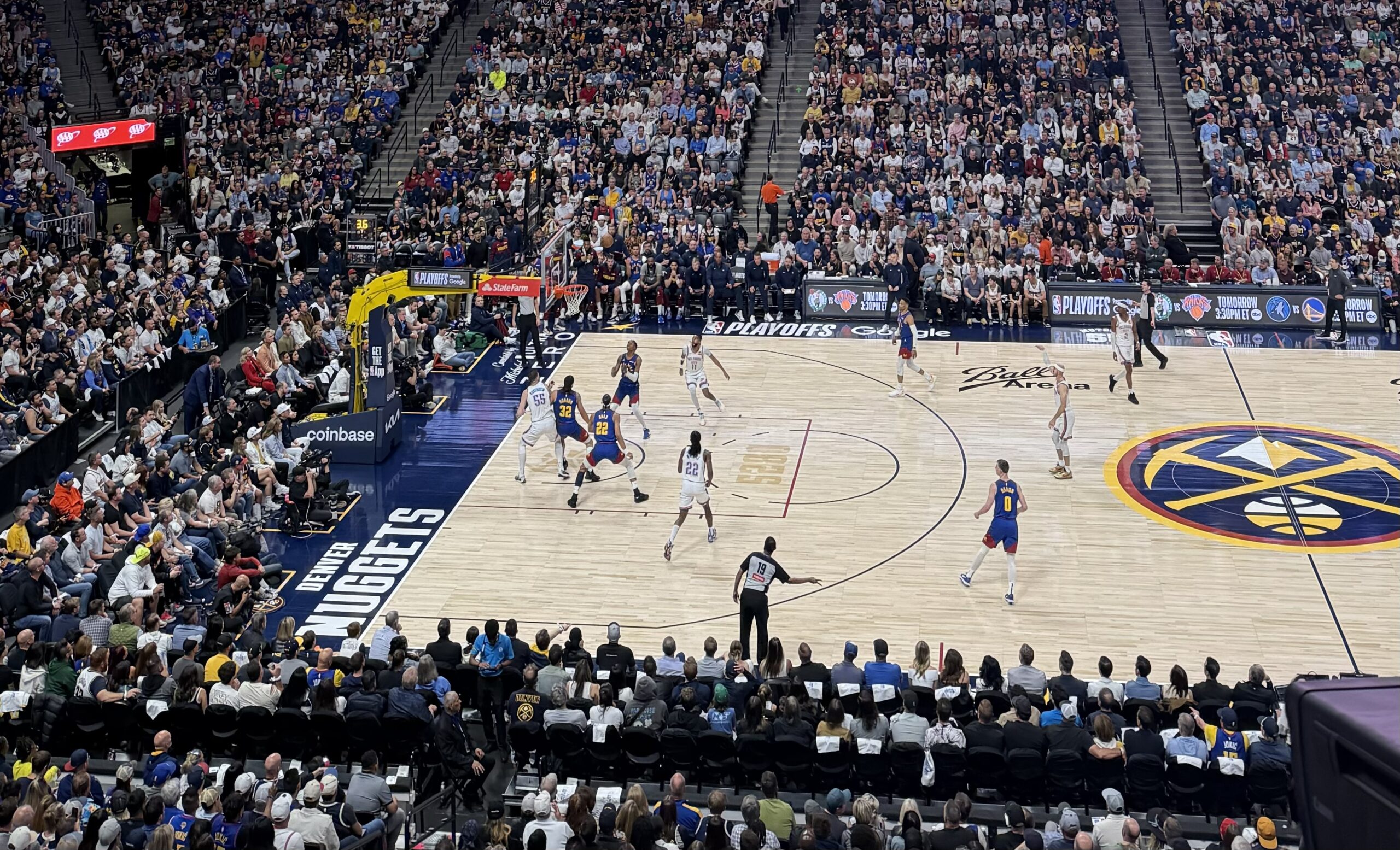University administration pours over $21 million each year into the 17 varsity sports teams. About $15 million is allocated to the teams; the other $6 million is not allocated.
The sum covers equipment, travel, coaches’ salaries and athletic scholarships, according to Title IX reports to the U.S. Department of Education.
The department’s Gender Equity Survey for 2007, a national study, states that the operating expenses for DU’s women’s teams was $1,302,611 and men’s was $1,296,200. These figures do not include scholarships, recruiting fees or coaches’ salaries.
The breakdown of operating expenses looks like this, for the top teams funded varsity athletes:
Men’s basketball spent over $21,000 per player. That’s the highest cost per player of all the varsity teams. The total operating expense was $276,725 for the 13 team members.
Women’s basketball spent $20,051 per player last year. The total operating expenses was $280,713 for the 14 players, the second highest total expense.
Women’s golf spent $15,978 per golfer, which totals $111,845 for the sevenplayers.
Gymnastics received $13,752 for 15 gymnasts. That adds up to $206,276, the second highest amount for women’s teams behind basketball.
Hockey ranks fifth on the list, with an operating expense of $13,739 per player. With 26 players on the roster, that adds up to $357,215 for the team. That is the largest total operating expense among the varsity teams.
Men’s soccer spends $123,247 on total operating expenses for the 27 players.
“We want to allocate resources where they benefit the student athlete first,” said Dan Van Ackeren, chief financial officer of the Division of Athletics and Recreation.
A large amount of the money that goes into varsity sports – over $1.6 million annually – comes from corporate sponsorships, said Van Ackeren. Unrestricted gifts for athletics total over $5 million per year. The administration also receives restricted gifts, which donors give for a specific cause or team. The new benches on the soccer field, for example, are the result of a restricted gift from a donor.
The Western Collegiate Hockey Association also distributes revenues generated primarily from the tournament at the end of the season. DU generally receives around $100,000, said Van Ackeren.
The amount that schools receive from the conferences they are part of varies. The Sun Belt Conference distributes money to schools depending on the number of wins teams rack up, for making it to the tournament at the end of the season and for every team in the conference that makes it to the tournament. Each unit distributed is worth up to $100,000, but the total amount varies year to year.
The National Collegiate Athletic Association (NCAA) also helps fund sports programs. The allotment that DU receives from the NCAA depends on the number of scholarships offered by the school. It is an incentive for schools to offer the maximum amount of scholarships so that they will receive the maximum amount of funding. DU is currently receiving over $200,000 from the NCAA and is giving out 178.7 full scholarships to student-athletes. Currently, 100 of these scholarships are going to women, while 78.7 are going to male student-athletes.
Van Ackeren said the hockey team receives 18 full scholarships and can divide them according to how the coach and athletic director see fit. Administrators have the power to do this because men’s hockey is an equivalency sport. Women’s gymnastics, women’s basketball and women’s volleyball are all equivalency sports, too.
Most sports, like men’s basketball, are head count sports. All 13 scholarships that the men’s basketball team receives are handed out to individual players in full. Women’s basketball receives the second highest amount of scholarships behind hockey with 15, and women’s soccer and swimming each receive 14 scholarships. The NCAA dictates these numbers.
According to the Gender Equity Survey, the university currently gives $6.8 million in scholarships for student-athletes. Between men and women the numbers are divided nearly equally: women receive 53 percent and men receive 47 percent of the total dedicated to scholarships.
“[It is] amazing in terms of how well we do with gender equity,” Van Ackeren said.
Along with the number of athletes on the roster, other criteria taken into account are traveling expenses, salaries, incentives to have other teams come play DU, strength and conditioning, sports medicine and equipment.
Van Ackeren wouldn’t provide an answer when asked about individual sport’s budgets.
“Unfortunately, I can’t do that. Across the country that’s information that they don’t usually share, however what they do share is the total athletic expenditures for men and women,” he said.
Currently, the administration has its eye on the basketball team. The team is planning to move to a better conference that fits the school academically, regionally and talent-wise.
“That’s what I think people have to understand. The reason we are focusing on men’s basketball is because financially that’s where we need to be to get into [a] great conference,” Van Ackeren said. “Potential revenue is so much greater [in basketball] than any other sport. A windfall in basketball is not going to [just] benefit basketball; it’s going to benefit the whole athletic program.”
>> See SPORTS, p. 15
>> Continued from p. 14
“In terms of athletics as a whole, we are extremely privileged,” said senior Michele Lowry, a member of the swim team and a part of the student-athlete advisory. “But because we [the swim team] are not a revenue generating sport we do not get as much support as other sports.”
Even the athletes that play for sports that generate more revenue like hockey and basketball do not get everything they want when they want it.
“For being on the team which is and has been in the top ten in the country for years, our budget is pretty tight,” said a member of the hockey team who wished to remain anonymous. “It is better than other sports here at DU, but compared to other teams that we play, we don’t get as much.”
Many students assume that the hockey team receives the most support financially.
When asked to rank sports in the order that she thought received the most attention, sophomore Kaitlyn Barclay said, “Hockey first, then lacrosse and basketball.”
The individual revenues for each sport are not available, but the total revenues for men’s varsity teams is $7,374,584, and the total revenues for women’s teams is $6,989,922.
Athletes continue to fundraise individually for trips that are out of the ordinary and are not covered in the team’s budget like the women’s lacrosse trip to Australia.
“[The trip is a] great recruiting tool and great reward for the team, but as a division it is not fair to fund that one but not for others,” said Van Ackeren.
Since 1999, when DU switched to Division I, each program is looked at the same, according to Van Ackeren. Before the switch there was a distinction between “Tier A” teams, those that competed nationally, and “Tier B” teams that competed regionally. Now that distinction is gone. Funding changed when expectations for sports changed and the administration decided it wanted teams to be able to compete nationally.
“We’re one of the most successful D1 programs in the country,” said Van Ackeren.











